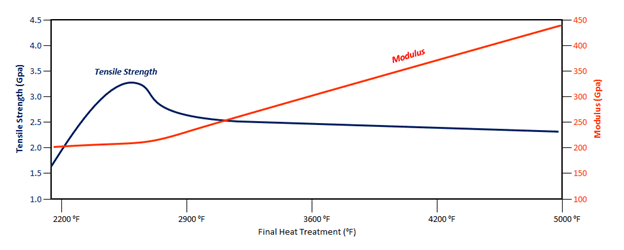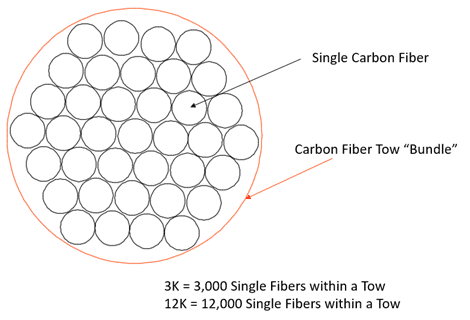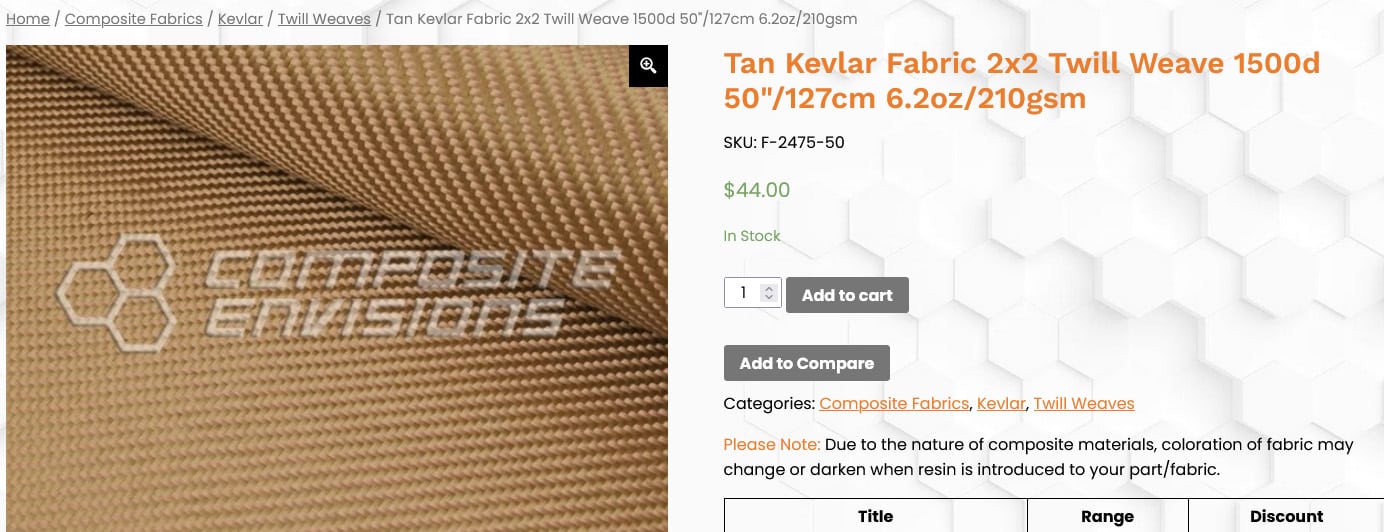Chemistry is a subject on the forefront of composite arts. Chemistry has everything to do with understanding how composite fibers are sized, measured, grouped, and woven. Chemistry is used in all composites made today and lights the path for the future of composite design on earth and beyond. Chemistry has everything to with the sizing, strengths, modulus, bonding…. EVERYTHING!
However, there will not be any chemistry degrees handed out for this article. Instead, the implications chemistry has on composite fibers and fabrics will be explored as we explain how fibers are made, the implications of fiber processing, and how each Fabric is measured for use in today’s markets. Well also make sense of all the abbreviations that are put in front of the fabrics described on the site.
Carbon Fibers are derived from polyacrylonitrile (PAN) filaments in most earthly applications used today. These fibers are rich in carbon, which will provide the base for the material properties enjoyed by the world today. PAN filaments are spun and subjected to a series of stretching and heating processes to produce carbon fibers. A final series of heat treatment is applied to these fibers. The temperature of the heat treatment will determine characteristics in the carbon fibers such as size, modulus, and strength of these carbon fibers. A lower temperature heat treatment of 1500-1600C produces a higher strength & standard modulus fiber. On the other hand, as heat treatment temperatures increase (Up to ~3000C), impurities within the fibers are burned off and the carbon fibers achieve a higher degree of graphitization or crystallization. This attributes to thinner fibers that ultimately have a higher modulus. As a trade-off, the heat deteriorates the fiber’s overall strength and the carbon fibers become more brittle.



Upon completion of heat treatment, the Carbon Fibers are placed into groups of fibers called “Tow” or “Tow Bundles.” Tows are carbon fiber strings characterized by how many fibers are carried within. CF fabrics and tapes are commonly defined in tow size as 1K, 3K, 6K, 12K and up to even 18K for specialty fabrics. K stands for how many thousand fibers are in each individual tow within the fabric.
The differences in heat treatments and fiber sizing are the reason in which for example, a 6K Intermediate Modulus Fiber could be the same size/weight as 3K Standard Modulus Fiber. Fibers within the Intermediate Modulus tow are going to be thinner and thus lighter than the compared 3K Standard Modulus fibers and tow.
Aramids such as Kevlar is made from Fibers spun into yarns, that are then made into Fabrics commonly used today. There are many choices of fibers that make an endless possibility for yarns and fabrics based on the need of the part. Of the (3) Fiber main types, measurements are arguably most complicated with Kevlar.
Kevlar Fabric, as a composite product used in laminates is commonly defined by its ply density; Usually measured by taking the total fabric weight and dividing it by the surface area of the ply or roll of material. Units used are in Grams per Square Meter (GSM) or Ounces (Oz) per square meter. While the density of the fabric (gsm / oz rating) is a critical measurement for all fabrics within the composite industry, Kevlar fibers / fabrics are characterized much differently than Carbon Fiber. The density of the fabric only scratches the surface of the true material properties that may come from Kevlar Fabrics.
In addition to fabric use in composites, Kevlar is often marketed and sold as a yarn or “Tow”. The precursor to woven or twill fabrics. In yarn form Kevlar is commonly used in fire resistant clothing, ropes, cables, racing gear, and high-pressure vessel applications. Measuring individual yarn characteristics may be nearly as complicated as characterizing the fabrics. While yarn is a close equivalent to “Tow” in each fabric, an important difference lies within.
While tow in Carbon Fiber is an untwisted bundle of fibers, Kevlar Yarns are made from twisting continuous fibers together. As a yarn is twisted more its characteristics change, and the yarns become stiffer and generally have a higher modulus. Characteristics of the fibers and yarn are the building block in which Kevlar fabrics are built.
In yarns, terms such as denier, dtex, or simply “d” are commonly used to describe a yarn’s size. Size is determined by weight over a defined length. These units / measurements come from a history in the textile industry and define yarns by their Linear Density, or simply the mass over a defined length. Taking an inch or yard of yarn and trying to weight the yarn was simply not as feasible as measuring a longer amount of yarn. In turn, industry coined “denier” as a means of describing linear density. The linear Density is described, just in a different unit of length. The linear density is an important unit of measure, it characterizes the fabric in strength and modulus. It also holds a key in how much resin is needed for making a part.
Below is how Denier & Dtex are described and related:
Denier (d) – Grams of Yarn in a 9,000-meter length
Decitex (dtex) – Grams of Yarn in a 10,000-meter length
(1 dtex = 0.9 Denier)
A baseline for Kevlar fabrics is approximately 1500d but can vary vastly. In thinner fabrics, the denier could be less than 200d. This would mean that the fabric is going to take less resin and overall be a much thinner & lighter ply used in areas where weight savings may be factor. Most often the differing Denier measurements is because a different Kevlar Fiber type is used within the yarn. The fiber and yarn have been tested to give optimum results into the fabric. On the heavier end, Kevlar denier measurements may go up to ~3000d. Commonly used in no crimp fabrics, these fabrics will take up more resin and give stiffer / more flexible material properties.
Composite Envisions uses a system to describe each of our Fabrics. Below is a quick reference guide as to what one may see when selecting one of our Kevlar fabrics:

Here is where a curve ball may be thrown, Hybrid Fabrics. These fabrics often use a different material in the weft direction as the warp direction. These hybrids soar in giving a moderation in advantages to cost, performance, and visual effect. While it may seem confusing at first, the principles of measuring that apply to Kevlar and Carbon Fiber are combined in measuring these hybrids. An example in Composite Envisions Innegra Hybrid Fabric (as below)

One may notice that a new number is shown within the fabric, “18 epi X 30 ppi”
EPI – Ends per Inch (Warp side)
PPI – Picks per Inch (Weft Side)
If one was to draw a 1” x 1” square on this fabric and place it under a magnifying glass, they will find a certain number of Picks and Ends on each side. This is the number of Tows or Yarns that are within that inch in each direction. In this fabric, there would be (18) individual 3K Carbon Fiber Tows in an inch of the fabric and (30) 940d sized Yarns per inch of fabric.
Fiberglass products come from (2) main types of fiber types, E-Glass & S-Glass. E-Glass is known for being an all-around strong and cheap option while S-Glass has better material strengths and modulus capabilities while costing more. Once E-Glass or S-Glass filaments have become fibers they are be arranged in (2) different ways. Filaments may be used to make Continuous Fibers that may be spun into yarns or be chopped into discontinuous fibers as used in Chopped Strand Mat (CSM). Yarns in continuous fibers are generally used in industry to make Woven Fabrics. Both types have advantages in their respective use. All Fiberglass is commonly defined by its ply density; Usually measured by taking the total fabric weight and dividing it by the surface area of the ply. Units used are in Grams per Square Meter (GSM) or Ounces (Oz) per square meter.
Additional criteria that separate the continuous fibers are clothes and roving. Cloth is generally thinner and forms to complex shapes easier, while roving adds quick thickness and rigidity to laminate parts.
